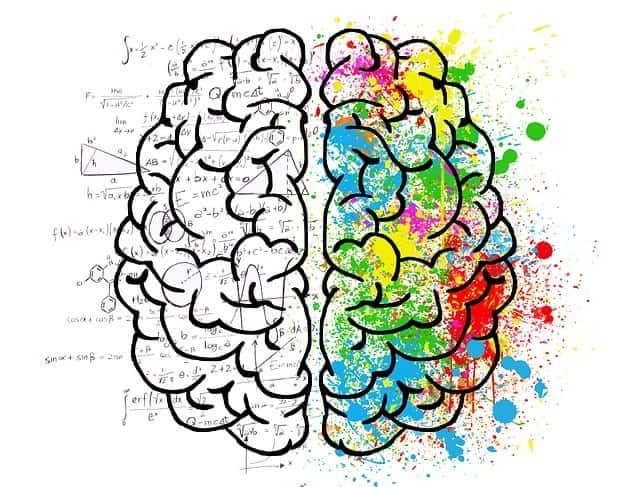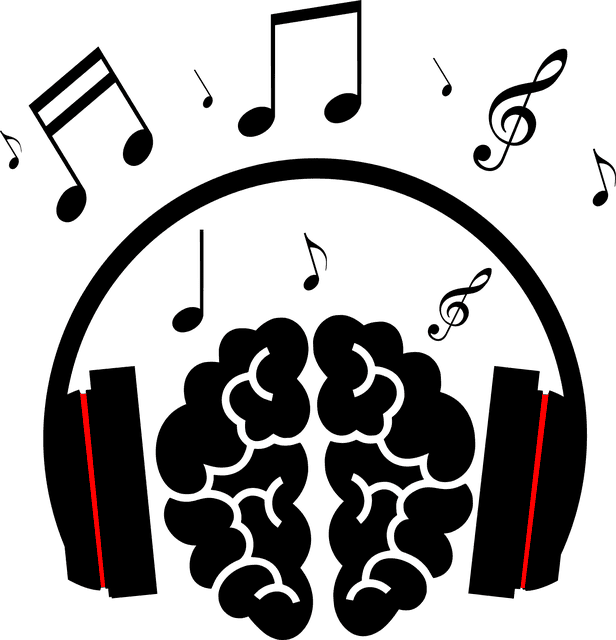The Profound Effects of Music and Listening Therapy on Our Minds and Emotions
In recent years, there has been a growing fascination with the transformative effects of music and listening therapy on our mental and emotional well-being. The field of neuroscience has made significant strides in uncovering the profound impact that music can have on our brains, revealing its potential as a powerful therapeutic tool.
The science behind integrating music in therapy reveals how deeply intertwined music is with our brains, bodies and emotions. When we listen to music, various regions of our brain are activated, including those responsible for processing emotions, memory and reward. This explains why certain songs or melodies can evoke strong emotional responses or trigger memories from our past.

Understanding Music in Therapy: A Holistic Approach to Healing
Using music in therapy is becoming an increasingly popular form of treatment to help support mental health and emotional well-being, and in some cases has been found to be effective in reducing anxiety, depression and stress levels, and other positive changes in mood and overall psychological state.
Listening therapy is another approach that harnesses the power of sound to promote healing. It involves carefully selected music or sounds that target specific areas of the brain to stimulate relaxation or improve cognitive function.

Not only do music and listening therapy provide an avenue for self-expression, emotional release, and connection with others, but research has also shown that they can have significant benefits for individuals with conditions including autism, chronic pain and post-traumatic stress disorder (PTSD).
The Science Behind Listening Therapy: How Sound Frequencies Affect Our Brainwaves
The field of listening therapy has gained significant attention in recent years as researchers delve into the science behind how sound frequencies affect our brainwaves. By exploring concepts such as the Polyvagal Theory, neuroplasticity and the interplay between the parasympathetic and sympathetic nervous systems, we can gain a deeper understanding of how listening therapy can impact our overall well-being.
Sound frequencies have been found to have a direct influence on our brainwaves. Different frequencies elicit distinct responses within our neural pathways, affecting our mental states and physiological processes. The Polyvagal Theory, developed by Dr. Stephen Porges, suggests that certain sound frequencies highlighting the human voice can retune the nervous system and activate the Social Engagement System, promoting improved regulation and connection. Conversely, other frequencies may stimulate the sympathetic nervous system, triggering what is commonly known as a fight-or-flight response.
Neuroplasticity also plays a crucial role in listening therapy. This concept refers to the brain’s ability to reorganize itself by forming new neural connections throughout life. By exposing ourselves to specific sound frequencies through listening therapy, we can potentially reshape and strengthen neural pathways and enhance cognitive functions over time.
We can tap into the transformative power of sound to enhance mental well-being and promote emotional healing.

The Psychological Benefits of Music and Listening Therapy for Mental Health Disorders
There has been a growing recognition of the powerful impact that music can have on our mental health and listening therapy has been shown to have effective applications in clinical settings. It is used as an adjunct treatment for conditions such as anxiety disorders, attention deficit hyperactivity disorder (ADHD), and autism (ASD). By strategically using music that has been filtered to highlight frequencies that send cues of safety to the nervous system, therapists can aim to regulate brainwave patterns and promote positive changes in behavior and emotional well-being.
It has become evident that music has the ability to influence our mood, emotions and mental health in profound ways.
Exploring the Emotional Healing Power of Music as Therapy in Trauma Recovery
Music and listening therapy has emerged as an undeniably valuable tool in trauma recovery that can support individuals in their healing journey toward recovery from traumatic experiences or grief. Emotional resilience promoted through listening therapy allows individuals to explore their feelings in a safe and supportive environment, especially when combined with other therapeutic approaches, such as EMDR, Somatic Experiencing®, Sensory Integration or talk therapy.

The concept behind listening therapy aligns with the Polyvagal Theory, which emphasizes the nervous system’s role in trauma responses. By engaging with music that has been specially filtered to calm the listener, providers can help clients activate the parasympathetic nervous system, which helps promote relaxation and reduce feelings of anxiety or hyperarousal.
These therapeutic settings provide a safe space for individuals to explore their emotions and release tension accumulated from past traumas. Whether it’s through gentle melodies, nature sounds, or rhythmic beats, listening therapy offers a pathway toward inner peace and emotional restoration.
Ultimately, listening therapy offers an accessible and empowering approach to trauma healing. Through the simple act of engaging with therapeutic music playlists and creating a calming environment on one’s own, or exploring listening therapy within a clinical setting alongside other therapeutic modalities, individuals can take significant steps toward reclaiming their sense of safety and finding solace within themselves.
Listening therapies offer hope for those seeking alternative methods to address their unique challenges.

Polyvagal Theory: The Brain and Body Connection
Dr. Stephen Porges, the creator of the Polyvagal Theory, has made significant contributions to our understanding of the human nervous system and its impact on social behavior and emotional well-being. His groundbreaking work sheds light on the complex interplay between our autonomic nervous system, neuroplasticity, and our capacity to form and maintain healthy relationships.
The Polyvagal Theory illuminates the intricate relationship between mind and body that shape our ability to engage in meaningful connections with others.
The Polyvagal Theory explores how our autonomic nervous system responds to different social cues and environments. It emphasizes the role of the vagus nerve in regulating our physiological state and influencing our ability to connect with others. Dr. Porges’ research has shown that this theory can have profound implications for mental health treatment, trauma recovery and even everyday interactions.
Dr. Stephen Porges’ contributions have not only expanded our understanding of how we relate to others but also provided practical tools for therapists and individuals seeking healing and growth. His pioneering work continues to inspire new avenues of research and therapeutic approaches based on his profound insights into the complex connection between neurobiology, social engagement, and emotional resilience.
The Safe and Sound Protocol: Evidence-based Listening Therapy
The neuroscience of music and listening therapy has long been an intriguing field, exploring the profound impact that music can have on our minds and body. One notable application of Dr. Porges’ work is the Safe and Sound Protocol (SSP), which aims to regulate the autonomic nervous system through filtered music. By sending cues of safety through specific frequencies that highlight the human voice, this listening therapy can help individuals better regulate their nervous system, and improve their overall well-being and ability to connect with others.
Designed to address dysregulation of the autonomic nervous system, this evidence-based listening therapy offers a non-invasive approach to help clients find their unique journey towards better nervous system regulation and overall health. Clients who have experienced the SSP have reported improvements in self-regulation, attention, social engagement, and overall well-being.
By leveraging what we know about neuroplasticity, Polyvagal Theory, and the autonomic nervous system, we can begin using targeted listening therapies such as the SSP to offer individuals a unique path toward improved nervous system regulation on their personal healing journey.
Incorporating Music into Daily Self-care Practices for Overall Well-being
A powerful tool that can be incorporated into daily routines is therapeutic music. By curating personalized playlists or albums specifically designed for relaxation and healing, individuals can create a calming environment that nurtures their mind, body, and soul. Whether it’s starting the day with soothing melodies or winding down in the evening with ambient soundscape compositions, these intentional choices can have a profound impact on our emotional state and overall sense of well-being.
Creating a calming environment with ambient soundscape compositions allows us to tap into the power of sound as a form of therapy. By immersing ourselves in gentle nature sounds, soft instrumental tunes, we can create an atmosphere that promotes relaxation, reduces stress levels, and enhances focus.
In addition to the specially filtered playlist, the Safe and Sound Protocol (SSP) includes playlist options that have been filtered through a less intensive algorithm to offer gentler alternatives that are designed to support and maintain the progress achieved from the core program.

Incorporating music and listening therapy into our daily self-care routines allows us to connect with ourselves on a deeper level. It offers solace during challenging times and serves as a reminder to prioritize our mental and emotional health.
Harnessing the Therapeutic Potential of Music and Listening Therapy
The use of music for anxiety relief, stress management, mood regulation, trauma processing, and emotional resilience holds immense potential for improving mental health outcomes. As we continue to explore the healing power of music in various therapeutic contexts, it becomes evident that this art form has a unique ability to connect with our emotions and contribute positively to our overall well-being.
By leveraging this knowledge through practices like music therapy and listening therapy, we can tap into the transformative power of sound to enhance mental well-being and promote emotional healing.



 © 2025 Unyte Health US Inc.
© 2025 Unyte Health US Inc.